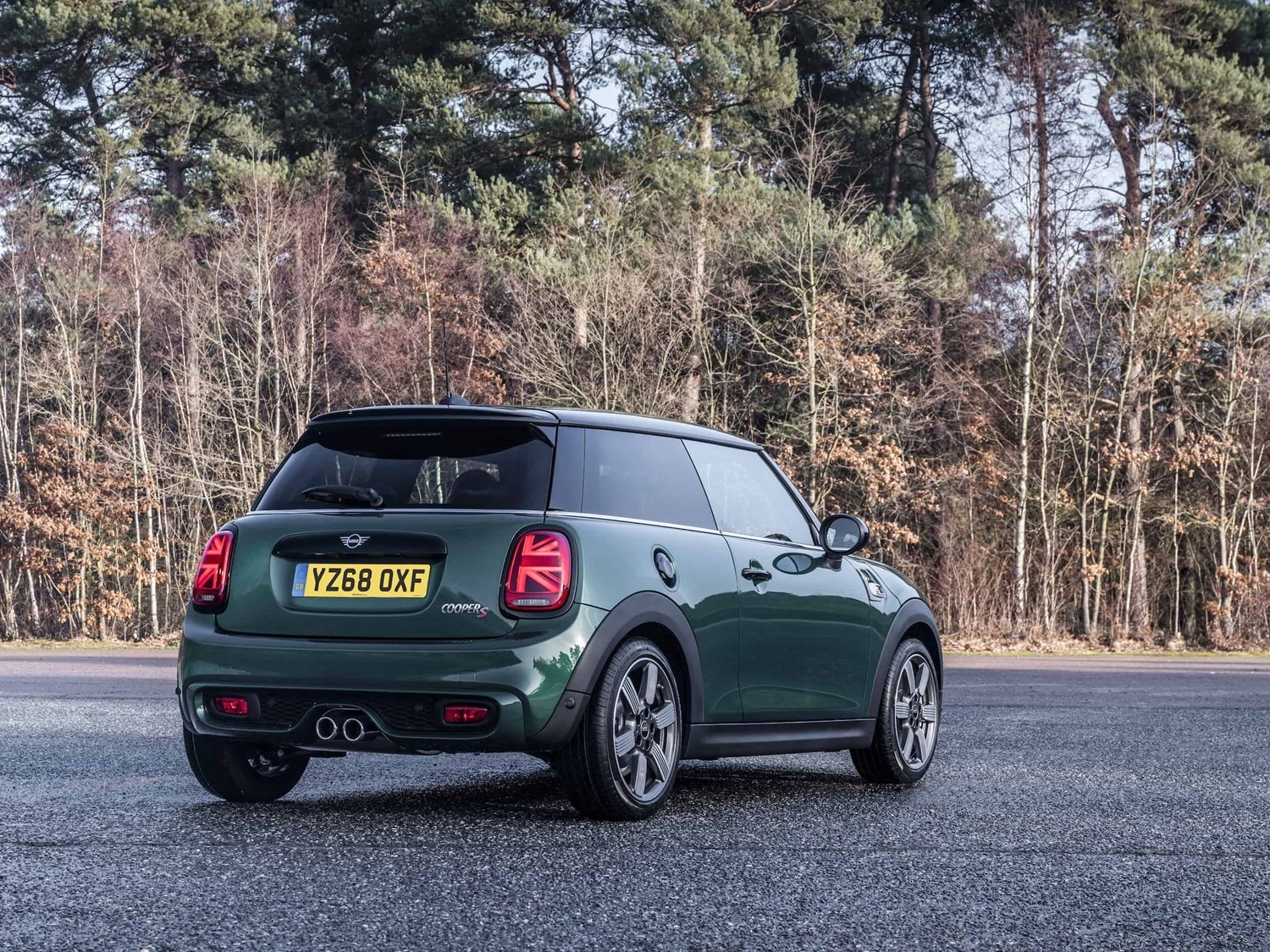Space and practicality
The original Mini was named for obvious reasons as it was tiny. While this modern Mini has grown considerably, it’s still rather cosy in the cabin. Realistically, both the three- and five-door models seat four, although you could squeeze a fifth person in the middle for a short period of time in the five-door version. The five-door is larger in size, too, with its boot measuring 278 litres, which is a lot more useful than the three-door’s 211 litres.
For accessibility purposes, the five-door is the more practical option, although getting in may not be as simple as with other hatchbacks due to the relatively high floor sills.
Following the introduction of the third generation, interior space was increased and gave a few centimetres extra of space here and there for improved comfort. It may not be a great family option, but it’s a bit more spacious than you might expect.
The issue with Mini’s safety equipment is that the large majority come as optional extras, so even though the base product is a safe structure and has a four-star NCAP rating from 2014, the driver assistance systems come in optional technology packs, which increases the cost of the vehicle even more, while rivals get such features as standard.
Engines
As part of the 2018 update, Mini removed all the diesel versions from its line-up, which means if you want an eco-alternative to petrol, then you’ll have to look at the electric model. If you do want a diesel Mini, you’ll have to find a pre-2018 model, or look at a Clubman or Countryman instead.
There are two petrol choices in four guises, a 1.5-litre three-cylinder with either 101bhp or 134bhp in the One and Cooper respectively, or there’s the 2.0-litre, which pumps out 189bhp in the Cooper S and 228bhp in the John Cooper Works (JCW) model. All versions are available with either a six-speed manual or seven-speed Steptronic dual-clutch automatic.
For most, the 134bhp Cooper is a great all-rounder – offering smooth acceleration right through the rev range and managing 0-60mph in a swift 7.8 seconds, next to the One’s 10.1 seconds. If you want more performance you won’t be disappointed with the Cooper S (0-60mph in 6.6 seconds), which feels more involving to drive thanks to the sporty exhaust and more powerful engine, while the JCW hits 60mph in just 6.1 seconds.
If you’re looking for an EV, then the Mini Electric is well worth considering. It boasts a claimed 145-mile range on a full charge, but that’s based on careful driving and lots of regenerative braking. Realistically, it should be closer to the 100-mile mark. Charging takes around four hours from empty using a 7kW home wall box, or it can be topped up to 80 per cent in around 40 minutes from a 50kW rapid charger. Charging via a three-pin plug will take best part of 12 hours, though Mini only recommends doing this as a last resort.
Running costs
The Mini has always been fairly frugal while offering great driving dynamics, but this latest range of engines has really improved things significantly. The entry-level 1.5-litre petrol returns up to 49.6mpg, and CO2 emissions of between 119-125g/km. The Cooper version will average around a claimed 48.7mpg and the Cooper S 43.5mpg.
If you want to go down the electric route, then the Mini Electric is a very affordable option, and as well as being much cheaper to charge than to fuel, it also qualifies for free road tax, as well as being exempt from emissions-based road charges.





